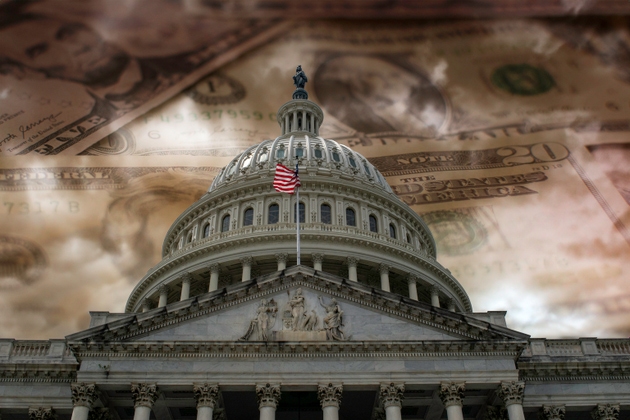Record-Breaking Debt Adds to Economic Pressure
The U.S. national debt has crossed $38 trillion for the first time in history, according to fresh data from the Treasury Department, as the federal government remains shut down, halting essential operations and disrupting the economy.
The debt milestone underscores the nation’s growing fiscal challenges, compounded by political gridlock in Washington. Analysts warn that the shutdown is worsening the financial strain by delaying economic activity, freezing federal programs, and increasing long-term operational costs.
Past shutdowns have proven costly. A 2013 standoff led to an estimated $2 billion in lost productivity, according to the Office of Management and Budget (OMB). Economists now warn the latest impasse could deliver an even steeper blow.
Experts Warn of Rapid Debt Growth

“This is a troubling milestone,” said Michael A. Peterson, CEO of the Peter G. Peterson Foundation, a nonpartisan think tank focused on fiscal responsibility.
“Reaching $38 trillion in debt during a government shutdown shows that lawmakers are failing to meet their most basic fiscal duties,” he said in a statement.
Peterson highlighted the alarming pace of debt accumulation, noting that the U.S. added $1 trillion in just two months. “We are adding debt twice as fast as the historical rate since 2000,” he warned.
The federal debt represents the total amount the government owes, while the deficit is the yearly gap between spending and revenue. The Treasury’s figures show a rapid escalation — from $34 trillion in January 2024 to $36 trillion by November and now $38 trillion in October 2025.
Shutdown Deepens Fiscal Strain
With Congress deadlocked over budget negotiations, the ongoing shutdown has furloughed hundreds of thousands of federal employees and stalled public services.
Economists say such disruptions tend to inflate government costs because restarting operations and catching up on delayed work require additional spending.
The last major shutdown in 2018 lasted 35 days, the longest in U.S. history, and cost the economy $11 billion, according to the Congressional Budget Office (CBO).
Experts caution that the latest closure, amid already historic debt levels, could amplify economic uncertainty and erode investor confidence.
Rising Interest Costs Threaten Future Spending

The Peterson Foundation estimates that interest payments on the national debt could rise from $4 trillion over the past decade to $14 trillion in the next ten years. This surge would limit funding for essential services such as education, healthcare, and defense.
“Mounting debt means higher interest costs, which crowd out both public and private investment,” the foundation warned.
David Kelly, chief global strategist at J.P. Morgan Asset Management, echoed these concerns. “The debt trajectory is beginning to worry investors,” he noted, cautioning that persistent borrowing could eventually weaken faith in U.S. economic stability.
Credit Rating Agencies Sound the Alarm
Investor anxiety has already translated into credit rating downgrades. In May, Moody’s Investors Service lowered the U.S. rating from its top-tier Aaa to Aa1, following earlier cuts by Standard & Poor’s and Fitch Ratings.
The agencies cited ballooning debt and repeated political brinkmanship as risks undermining America’s fiscal credibility.
Maya MacGuineas, president of the Committee for a Responsible Federal Budget, said the U.S. is becoming “distressingly numb” to dysfunction in Washington.
“We miss deadlines, blow past safeguards, and avoid addressing the biggest drivers of debt — including Social Security and Medicare, which are just seven years from insolvency,” she said.
Inflation and Consumer Impact
Economists warn that the growing national debt has direct consequences for consumers, especially as it fuels inflation.
“Rising debt pushes up prices and erodes purchasing power,” said Kent Smetters, a University of Pennsylvania economics professor and former Treasury official.
He added that long-term inflation will make it harder for future generations to buy homes and build savings, exacerbating wealth inequality across the country.
White House Points to Deficit Reduction Efforts
Despite the grim figures, the Trump administration maintains that it has taken steps to curb federal spending and improve fiscal management.
From April to September 2025, the federal deficit stood at $468 billion, the lowest since 2019, according to Treasury data.
Treasury Secretary Scott Bessent said on social media that the administration had reduced the deficit by $350 billion compared to the same period last year through spending cuts and revenue growth.
White House spokesperson Kush Desai added that the administration is focused on “boosting economic growth, lowering inflation, and eliminating waste and fraud” to keep the country on a sustainable path.
Growing Public Concern Over Debt Crisis
Public anxiety over the nation’s debt continues to rise. A September survey by the Peterson Foundation found that 81% of voters consider the national debt a top concern.
Analysts say the figure reflects deepening fears that unchecked borrowing could eventually lead to higher taxes, reduced social benefits, and slower economic growth.
As policymakers struggle to reopen the government, fiscal experts warn that the latest $38 trillion milestone is more than a number — it’s a wake-up call for both parties to act decisively before the nation’s fiscal stability reaches a breaking point.

